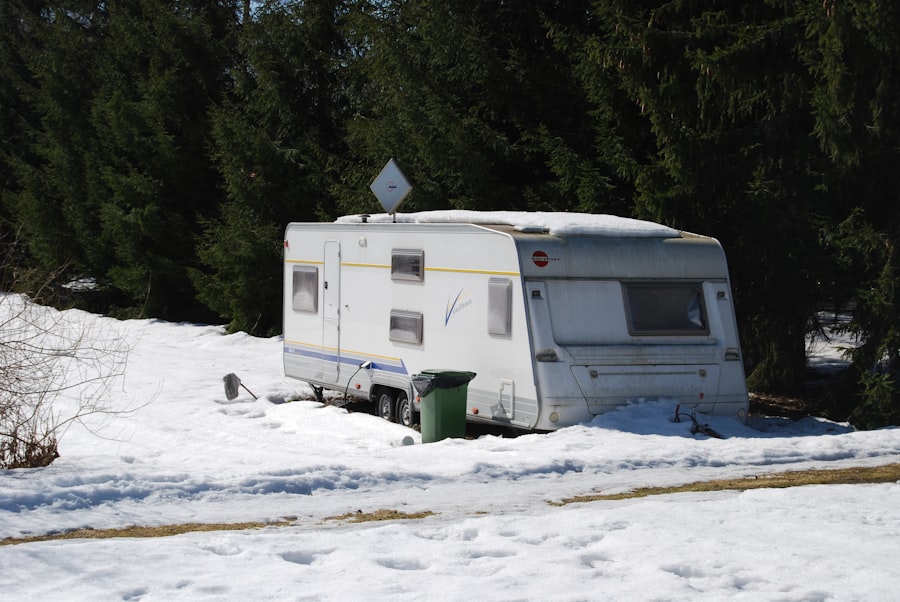In the realm of housing, affordability remains a paramount concern for many individuals and families. The rising costs of traditional homeownership, coupled with fluctuating market conditions, have led to a growing interest in alternative housing solutions. One such solution is the tiny home movement, which offers a cost-effective way to achieve homeownership without the burden of a hefty mortgage.
Tiny homes typically range from 100 to 400 square feet, allowing for significant savings on both construction and maintenance costs. For instance, the average cost of building a tiny home can be as low as $20,000 to $50,000, compared to the median price of a conventional home, which often exceeds $300,000 in many urban areas. Moreover, the cost-effectiveness of tiny homes extends beyond initial construction expenses.
Homeowners can benefit from lower utility bills due to reduced energy consumption and smaller living spaces that require less heating and cooling. Additionally, many tiny homes are designed with sustainable materials and energy-efficient appliances, further decreasing long-term costs. This financial advantage is particularly appealing to millennials and younger generations who are increasingly burdened by student loans and stagnant wages.
By opting for a tiny home, they can achieve financial independence sooner while enjoying the benefits of homeownership.
Key Takeaways
- Tiny homes offer an affordable and cost-effective housing solution.
- They provide flexibility and customization to suit individual needs.
- Energy-efficient designs promote sustainability and lower utility costs.
- Modern amenities and stylish designs enhance comfort and appeal.
- Community living fosters social connections and shared resources.
Flexibility and Customization
One of the most compelling aspects of tiny homes is their inherent flexibility and customization options. Unlike traditional homes that often come with rigid floor plans and limited design choices, tiny homes can be tailored to meet the specific needs and preferences of their owners. This customization can range from choosing the layout and materials to incorporating unique features such as foldable furniture or multi-functional spaces.
For example, a tiny home might include a Murphy bed that folds into the wall during the day, allowing for more usable space when not in use. Furthermore, the mobility of many tiny homes adds another layer of flexibility. Many are built on trailers, enabling homeowners to relocate their living space with relative ease.
This mobility is particularly advantageous for those who value travel or wish to explore different regions without the commitment of a permanent residence. The ability to change one’s surroundings while maintaining a sense of home is a significant draw for many tiny home enthusiasts. Whether it’s moving closer to family or seeking out new job opportunities in different cities, the flexibility offered by tiny homes aligns well with the increasingly transient nature of modern life.
Energy Efficiency and Sustainability

As environmental concerns continue to rise, energy efficiency and sustainability have become critical factors in housing decisions. Tiny homes inherently promote a more sustainable lifestyle due to their smaller footprint and reduced resource consumption. With less space to heat and cool, tiny homes require significantly less energy than their larger counterparts.
Many tiny home builders prioritize eco-friendly materials and construction practices, utilizing reclaimed wood, recycled materials, and non-toxic finishes that minimize environmental impact. Additionally, many tiny homes are equipped with renewable energy sources such as solar panels or wind turbines, further enhancing their sustainability credentials. Homeowners can harness natural energy to power their living spaces, reducing reliance on fossil fuels and lowering their carbon footprint.
For instance, a well-designed tiny home with solar panels can generate enough electricity to power all household needs while contributing excess energy back to the grid. This not only promotes sustainability but also offers potential financial benefits through energy credits or savings on utility bills.
Modern Design and Amenities
| Feature | Description | Metric/Specification | Benefit |
|---|---|---|---|
| Smart Home Integration | Centralized control of lighting, climate, and security | Compatible with Alexa, Google Home, Apple HomeKit | Convenience and energy efficiency |
| Energy-Efficient Lighting | Use of LED and smart bulbs | Up to 80% less energy consumption | Lower utility costs and longer lifespan |
| Open Floor Plan | Seamless flow between living spaces | Average room size: 500 sq ft | Enhanced natural light and social interaction |
| High-Quality Materials | Use of sustainable and durable materials | Recycled wood, low-VOC paints | Improved indoor air quality and longevity |
| Modern Kitchen Appliances | Energy Star rated and smart-enabled | Induction cooktop, smart refrigerator | Efficiency and convenience in cooking |
| Wellness Amenities | Incorporation of fitness and relaxation spaces | Home gym, spa shower, air purification | Improved health and comfort |
| Outdoor Living Spaces | Patios, decks, and landscaped gardens | Average size: 300 sq ft | Extended living area and connection to nature |
The design of tiny homes has evolved significantly over the years, moving beyond basic structures to incorporate modern aesthetics and amenities that appeal to contemporary homeowners. Many tiny homes feature sleek lines, open floor plans, and innovative storage solutions that maximize space without sacrificing style. The integration of large windows allows for natural light to flood the interior, creating an inviting atmosphere that belies the home’s small size.
In terms of amenities, tiny homes are often equipped with high-quality fixtures and appliances that rival those found in larger homes. Homeowners can enjoy full kitchens with energy-efficient appliances, luxurious bathrooms with modern fixtures, and even smart home technology that enhances convenience and security. For example, some tiny homes come with built-in smart thermostats that optimize energy use based on occupancy patterns or remote-controlled lighting systems that allow homeowners to adjust ambiance from their smartphones.
This blend of modern design and functionality makes tiny living not only practical but also appealing to those who appreciate contemporary aesthetics.
Community Living and Social Benefits
Tiny home communities are emerging as a popular alternative to traditional neighborhoods, fostering a sense of community and social interaction among residents. These communities often consist of clusters of tiny homes situated on shared land, promoting a lifestyle centered around collaboration and connection. Residents benefit from shared resources such as communal gardens, recreational areas, and common facilities that encourage social engagement.
The social benefits of living in a tiny home community extend beyond mere proximity; they create opportunities for meaningful relationships among neighbors. Many residents find camaraderie in shared values related to minimalism, sustainability, and intentional living. This sense of belonging can lead to increased emotional well-being and support networks that enhance quality of life.
For instance, community events such as potlucks or workshops can foster connections among residents while promoting skills sharing and collaboration.
Mobility and Location Options

The mobility aspect of tiny homes presents unique advantages for those seeking diverse living experiences without the constraints of traditional real estate. Many tiny homes are designed on trailers or wheels, allowing homeowners to relocate their residences easily. This mobility is particularly appealing for individuals who enjoy traveling or wish to explore different regions without committing to a permanent location.
Moreover, the ability to choose various locations enhances lifestyle flexibility. Tiny homeowners can opt for serene rural settings surrounded by nature or vibrant urban environments close to amenities and job opportunities. This adaptability allows individuals to align their living situations with personal preferences or life changes—whether it’s pursuing a new career in a different city or seeking tranquility in a remote area during retirement.
The freedom to move one’s home opens up possibilities for adventure while maintaining the comforts of personal space.
Low Maintenance and Durability
One of the practical advantages of tiny homes is their low maintenance requirements compared to larger properties. With less square footage comes less upkeep; homeowners can spend less time on chores such as cleaning, landscaping, and repairs. This simplicity allows residents to focus on experiences rather than being burdened by the demands of maintaining a larger home.
Additionally, many tiny homes are constructed using durable materials designed to withstand various weather conditions while requiring minimal upkeep over time. For instance, metal roofs are often chosen for their longevity and resistance to harsh elements, while composite siding can provide durability without the need for frequent painting or repairs. This emphasis on durability not only enhances the lifespan of the home but also contributes to long-term cost savings by reducing the need for repairs or replacements.
Investment and Resale Value
Investing in a tiny home can offer unique financial advantages compared to traditional real estate investments. While the initial purchase price is typically lower than that of conventional homes, tiny homes can still appreciate in value over time if located in desirable areas or within thriving communities. As interest in alternative housing options continues to grow, so does the potential resale market for tiny homes.
Moreover, the appeal of tiny homes extends beyond financial considerations; they often attract buyers looking for affordable housing solutions or those interested in downsizing from larger properties. This demand can create opportunities for sellers to capitalize on their investment when it comes time to sell. Additionally, some homeowners choose to rent out their tiny homes as vacation rentals or short-term accommodations through platforms like Airbnb, generating passive income while retaining ownership of their property.
This dual potential for appreciation and income generation makes tiny homes an intriguing option for those looking to invest in real estate while embracing a minimalist lifestyle.



